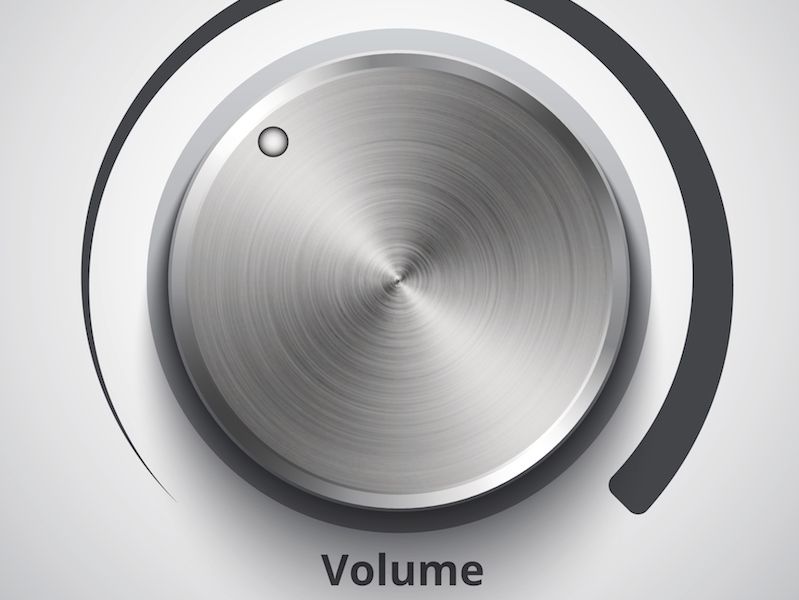
Have you ever seen the “Beware of Sharks” sign when you go to the ocean? It’s not hard to understand that you should never disregard a warning like that. You might even rethink swimming at all with a sign like that (if the sign is written in big red letters that’s especially true). For some reason, though, it’s harder for people to heed warnings about their hearing in the same way.
Recent research has found that millions of people ignore warning signs regarding their hearing (this research specifically considered populations in the United Kingdom, but there’s no doubt the concern is more global than that). Part of the issue is awareness. To be afraid of sharks is fairly intuitive. But most individuals don’t have an overt fear of loud sounds. And the real question is, what volume level is too loud?
We’re Surrounded by Hazardously Loud Sounds
It isn’t only the machine shop floor or rock concert that are dangerous to your hearing (not to minimize the hearing hazards of these scenarios). Many common sounds can be harmful. That’s because exposure time is as harmful as the volume. Even lower-level sounds, including dense city traffic, can be dangerous to your hearing if you are exposed for more than a couple of hours.
Read on to find out when sound becomes too loud:
- 30 dB: Everyday conversation would be at this sound level. You should be perfectly fine around this level for an indefinite time period.
- 80 – 85 dB: This is the sound level of heavy traffic, a lawnmower, or an air conditioner. After around two hours this level of sound becomes harmful.
- 90 – 95 dB: Think of the noisiness of a motorcycle. 50 minutes is enough to be harmful at this level of sound.
- 100 dB: This is the level of sound you might encounter at a mid-size sporting event or an approaching subway train (depending on the city, of course). 15 minutes of exposure will be enough to be dangerous at this volume.
- 110 dB: Have you ever turned your Spotify music up to ten? That’s usually around this sound level on most smartphones. This level of exposure will become dangerous after only 5 minutes of exposure.
- 120 dB and over: Immediate pain and injury can occur at or above this level (think about an arena sized sporting event or rock concert).
What Does 85 Decibels Sound Like?
In general, you should regard anything 85 dB or above as putting your ears in danger. But it can be hard to distinguish how loud 85 dB is and that’s the problem. A shark is a tangible thing but sound is not so tangible.
And hearing warnings commonly get neglected because of this specifically when the sound environment isn’t loud enough to cause pain. Here are a couple of possible solutions:
- Get an app: Your hearing can’t be immediately safeguarded with an app. But there are several free apps that can function as sound level monitors. Damage to your hearing can happen without you recognizing it because it’s tough to recognize just how loud 85 dB feels. The answer, then, is to have this app open and monitor the noise levels around you. Using this approach will make it more instinctual to identify when you are moving into the “danger zone”. (and you will also recognize right away when things are getting too loud).
- Adequate signage and training: This is true of workspaces, in particular. The significant hazards of hearing loss can be reinforced by signage and training (and the advantages of protecting your hearing). Signage could also make it clear just how loud your workplace is. Training can help employees know when hearing protection is needed or recommended.
If You’re in Doubt, Protect Yourself
Apps and signage aren’t a foolproof answer. So take the time to safeguard your ears if you have any doubt. Noise damage, over a long enough period of time, can result in hearing loss. And nowadays, it’s never been easier to harm your ears (it’s a simple matter of listening to your music too loudly).
If you’re listening to headphones all day, you should not increase the volume past the mid-mark. If you keep turning it up to hear your music over background sound you need different headphones that can block out noise.
So when volume becomes too loud, it’s important to recognize it. And to do this, you need to increase your own awareness and knowledge level. Protecting your ears, using earplugs, earmuffs, or decreasing your exposure, is pretty simple. That starts with a little recognition of when you need to do it.
That should be easier these days, too. Particularly now that you understand what to be aware of.
Think you might have hearing loss? Schedule an exam.
